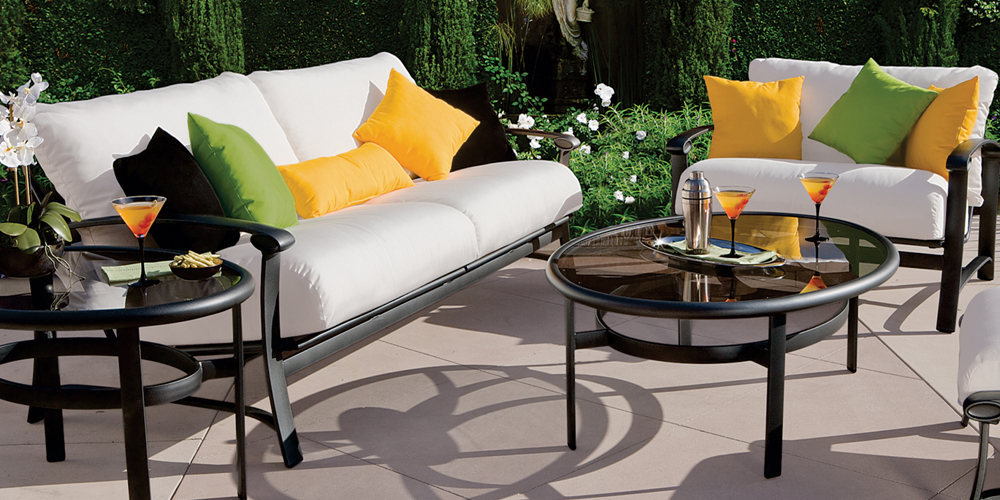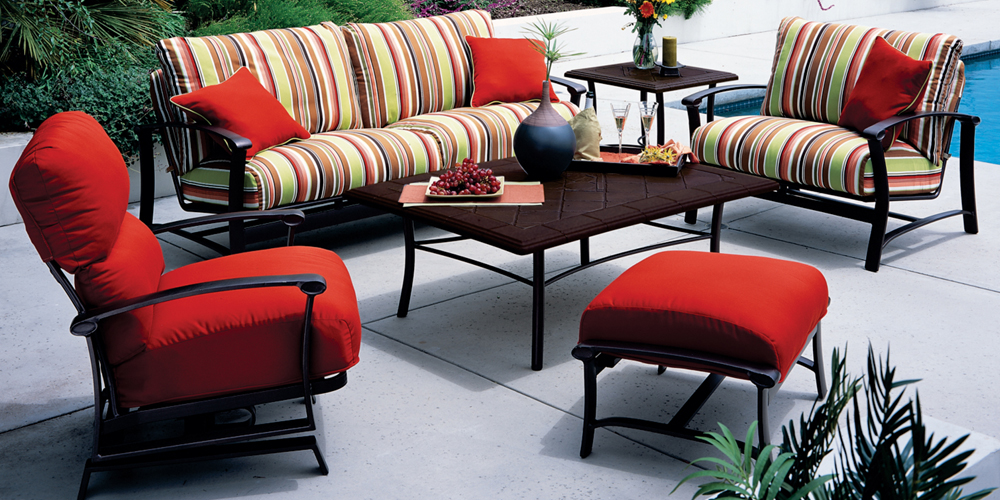



Comfort is the most important element when outfitting your outdoor space. Outdoor cushions enhance the look of your patio and backyard, adding style and warmth that makes outdoor living feel as cozy as an indoor setting. Outdoor cushions come in a variety of styles, sizes, colors, and patterns to bring aesthetic value that complements any style. While it is recommended to match your cushions by the options offered by your seating’s manufacturer, this guide outlines the basic construction, general sizes, features, and care for most outdoor cushions available on the market.
Outdoor cushions are constructed to withstand harsh outdoor elements. Quality outdoor cushions are weather and moisture resistant, so that they are quick-drying, and are resistant to mold, mildew, and fading. Filling and upholstery fabric will determine the durability and quality of your outdoor cushions.
Batting is used in combination with foam cushions to bring a smooth, streamlined appearance to cushions. Foam and Dacron cushions consist of a foam core with Dacron batting wrapped around. It is an economical option that carries a medium to firm density.
The most common filling material is foam which comes in a variety of densities whose attributes are important to different applications. There are 4 important factors that determine the quality of foam used for cushions:
Type of Foam
Qualities

The outer material of your outdoor cushions protects the filling from outdoor elements such as moisture, wind, and changes in temperature. Look for upholstery fabric that is both waterproof and fade-resistant so that sun and rain don’t damage your cushions. The following outlines the most common types of fabrics that are best-suited for outdoor use:
Type of Fabric
Qualities
LuxeDecor recommends purchasing the corresponding cushions specially designed to complement the manufacturer’s seating. This ensures the perfect fit for your cushions, especially with designs that feature rounded backs or frames that aren’t square or rectangular. However, general measurements and sizes can help determine the correct size cushions for any outdoor seating.
Width: Measures left-to-right distance across seating surface. Use the widest measurement when measuring left-to-right, or arm-to-arm to find the correct width.
Depth: Measures front-to-back distance across seating surface. Measure from the front edge of seat to the rear from the center of the seat.
Back: Measures from the base of the seat to the top of the back.
Height: Height refers to the cushion’s thickness. You can estimate the height of ideal cushion by measuring the the base of the seat to the ideal height of where you’d like the cushion to land.

Ties
Some outdoor cushions feature ties that fasten directly on the frame and keep cushions in place.
Slip Cover
Some outdoor cushions are tailored with a matching slip cover which eliminates exposed frames. Instead of exposed straps or ties, the cushion is held in place to the slip cover with industrial grade Velcro and with a pocket flap to conceal the frame.
Foldable
Some outdoor cushions are constructed as a single piece with seams separating the back and seat cushions. This is a convenient option that makes storing cushions easy.
Reversible
Reversible cushions allow you to quickly change the look of your outdoor furniture with different options for colors and patterns.



